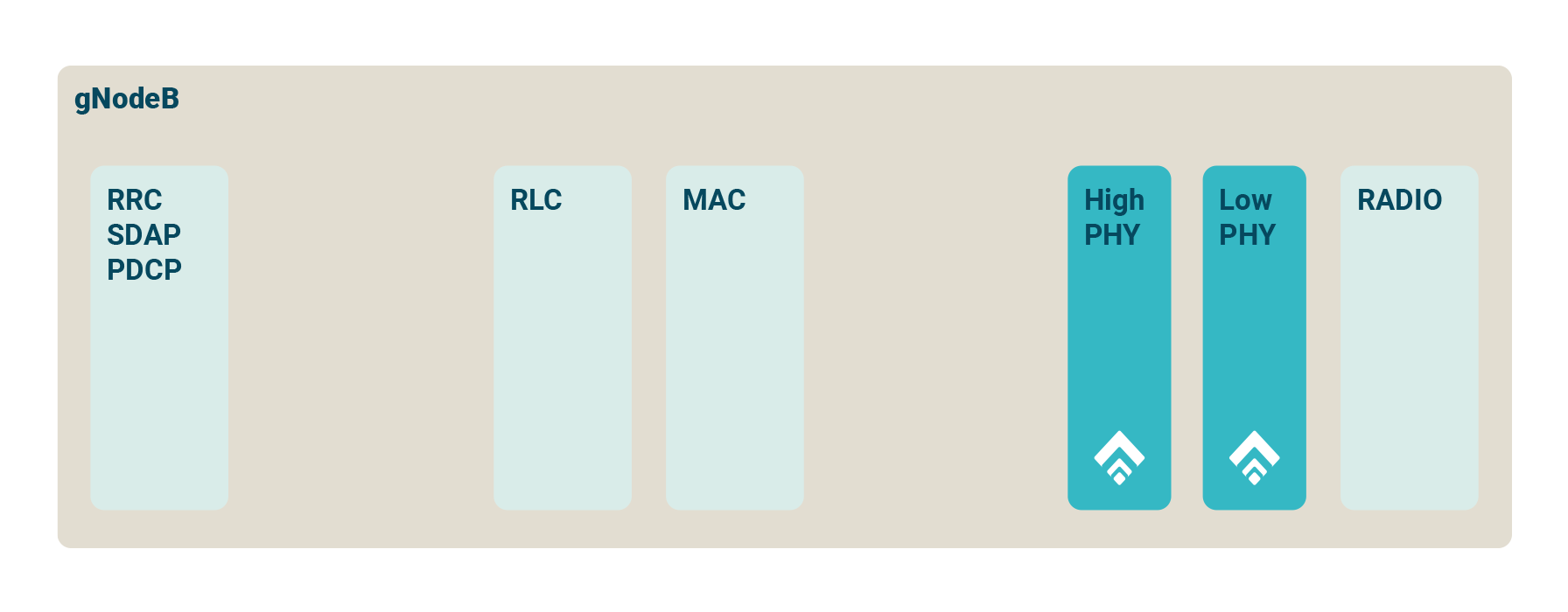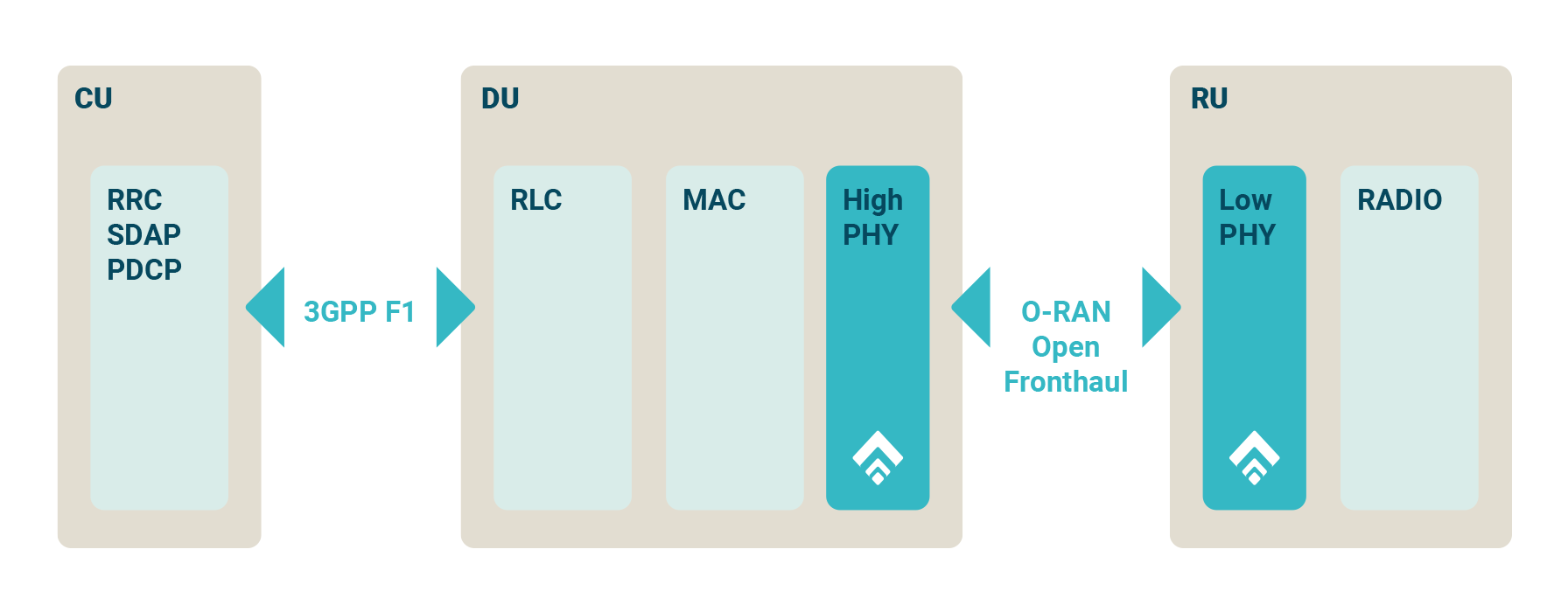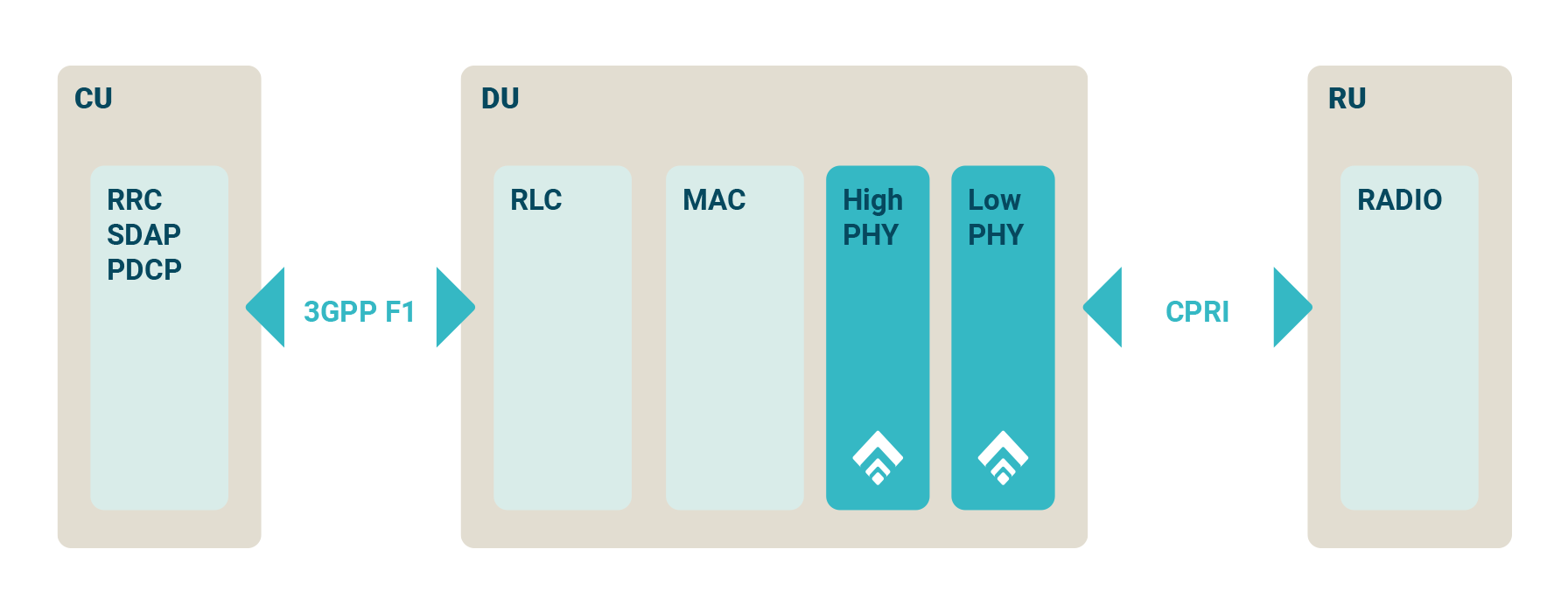The 5G RAN Opportunity
5G is the embodiment of a fundamental shift in how radio access networks (RANs) are built. After years of hype, 5G is finally becoming a reality. With this comes an industry drive and convergence towards enabling cost-optimised open networks. Mobile operators are looking to disaggregate their networks and diversify their supply chains so that they can break vendor lock-in, thereby opening up competition and encouraging innovation.
Picocom’s products enable this. With its Open RAN standard-compliant baseband semiconductors (System on Chip / SoC) and carrier-grade software, Picocom is empowering wireless vendors and new market entrants to compete in the rapidly evolving disaggregated telecoms RAN market.
Disaggregated Network Topology Split Options
One of the biggest benefits of 5G for Mobile Network Operators (MNOs) is the prospect of migrating from custom network nodes to a far more flexible approach that enables network nodes to be implemented in software running on generic hardware platforms. In the core network, this process is in an advanced state, with virtualisation and orchestration techniques from the IT world now being used to deploy network functions automatically at a large scale.
The process is a lot more difficult in the RAN and backhaul network, and the prize for MNOs is greater here as these functions typically account for 70-80% of Capex. In Release 15, the 3GPP identified various functional splits in the 5G NR RAN gNodeB (base station) that would facilitate this process, identifying eight possible places where the gNodeB function could be split into separate functional units. The most popular of these are:
Split 0 - gNodeB Integrated Small Cell

Split 2 - 3GPP F1

Split 6 - Small Cell Forum (SCF) nFAPI

Split 7.2 - O-RAN Open Fronthaul

Split 8

Industry Body Backed Split Definitions
3GPP specified the higher layer F1 interface, but additional interfaces at lower layer splits have also been specified by other industry bodies, and offer different relative advantages and disadvantages.
- The Split 6 interface protocol is the Network FAPI (nFAPI), specified by the Small Cell Forum, where the MAC and PHY functions are physically separate. Picocom contributes to the split agnostic FAPI Definition between the MAC and PHY layers.
- A Split 7 interface has been specified by the O-RAN Alliance, which has adopted the eCPRI interface as its basis. Whereas CPRI passes antenna samples using a proprietary protocol, eCPRI uses Ethernet. Moreover, in O-RAN fronthaul, it is frequency domain samples that are transported between the upper PHY and lower PHY, which leads to advantages.
- The Split 8 interface is mainly being considered where there are legacy systems and existing hardware and cabling/fibre can be reused.
Picocom and 5G PHY
A 5G PHY contains many functions that are very inefficient to implement on general-purpose processors. In current implementations, each vendor uses their own custom hardware and proprietary interfaces. This creates vendor lock-in and does not deliver the promised 5G cost reductions that are achieved through standardised solutions.
Picocom is developing products focussed on RAN for small cell deployments that use the standard interfaces described above. Our first products include:
- PC802 Open RAN SoC optimised for small cells. It employs the FAPI protocol (defined by the Small Cell Forum) to communicate with and provide physical layer services to the MAC. The device has an integrated O-RAN Alliance Open Fronthaul interface, based on eCPRI, to connect and communicate with Open RAN (remote) radio units (RUs), as well as JESD204B interfaces to connect gluelessly with commonly available radio transceivers.
- An SoC that performs all the digital functions of a small cell RU, communicating with a DU using O-RAN fronthaul and having glue-less interfaces to commonly used radio transceivers.
In-building Small Cell Deployment Example

Distributed Antenna Systems (DAS) and small cells have been extensively deployed around the world in all types of large buildings, from offices, hotels and apartment blocks to shopping centres, railway stations and airports. These systems are often expensive to deploy, needing to be designed and configured by experienced telecom engineers and built from proprietary units.
5G systems built on Picocom products will change all this, with open interfaces allowing the different parts of the system to be purchased from the most appropriate vendors. For example, a small cell DU may be located in a central server room and consist of a standard server with Picocom-based baseband offload cards. Two or four antenna RUs that support the desired frequency bands can be located on each floor of the building and connected back to the DU using standard Ethernet cabling and switches, instead of proprietary systems.
An example of such a small cell deployment system is illustrated in the figure above.
Picocom Open RAN resources
- What Open RAN means for Small Cells. Peter Claydon, Picocom President, says that the Open RAN movement aligns well with market drivers for 5G small cells, in an interview with The Mobile Network.
- Open RAN needs chips (SoCs). Peter Claydon, Picocom President, explores why Open RAN needs specialised 5G physical layer hardware to succeed in a guest blog for techUK.

